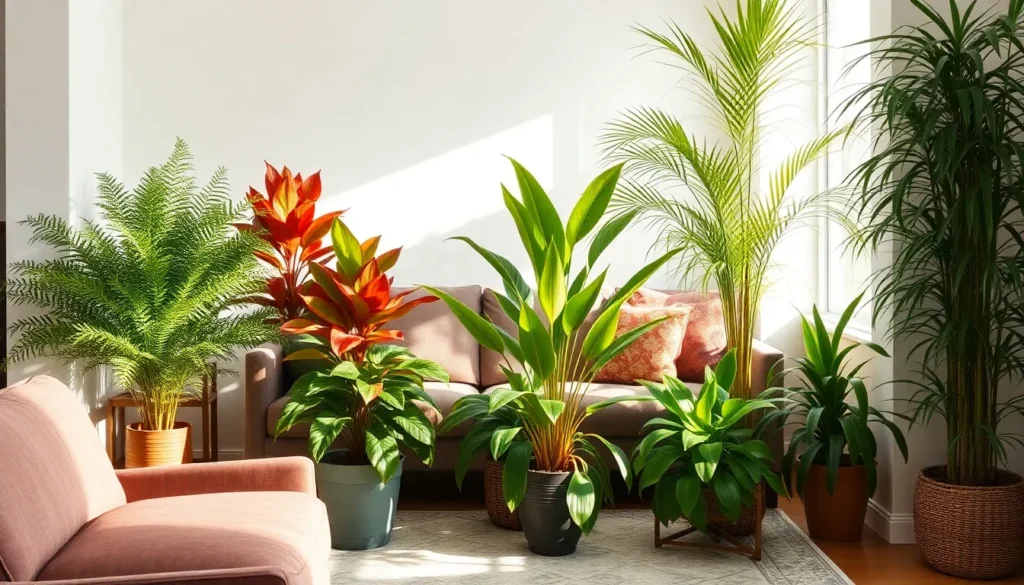We’ve all been there – wanting to fill our homes with gorgeous greenery but worrying about the safety of our beloved pets and curious children. The good news? You don’t have to choose between a stunning indoor garden and peace of mind.
Non-toxic houseplants offer the perfect solution for plant lovers who prioritize safety without sacrificing style. These beautiful botanical companions purify our air and brighten our spaces while remaining completely harmless if accidentally nibbled by a curious cat or explored by tiny hands.
Whether you’re a seasoned plant parent or just starting your green journey we’ll help you discover the most stunning pet-safe and child-friendly plants that’ll transform your home into a lush sanctuary. From low-maintenance succulents to dramatic statement plants there’s a non-toxic option for every room and skill level.
Spider Plants: The Perfect Pet-Safe Air Purifiers
Spider plants stand out as one of our top recommendations for pet owners seeking beautiful houseplants that won’t harm their furry companions. These resilient plants combine stunning visual appeal with powerful air purification capabilities.
Easy Care Requirements for Beginners
Spider plants thrive with minimal attention, making them ideal for new plant parents or busy households. We recommend placing them in bright, indirect light where they’ll produce their characteristic cascading baby plants called plantlets. Watering becomes simple once you establish a routine of checking soil moisture weekly and providing water when the top inch feels dry.
Temperature preferences remain flexible for spider plants, as they flourish in typical home environments between 65-75°F. Humidity levels don’t require special adjustment since these adaptable plants handle average household conditions without complaint. Fertilizing needs stay minimal with monthly feeding during spring and summer using diluted liquid fertilizer.
Natural Air Cleaning Properties
NASA’s Clean Air Study identifies spider plants as effective air purifiers that remove harmful chemicals from indoor environments. We’ve found these plants particularly skilled at filtering formaldehyde, xylene, and toluene from household air. Carbon monoxide absorption also occurs naturally through their leaf processes, though this shouldn’t replace proper ventilation systems.
Oxygen production increases during daylight hours as spider plants photosynthesize, contributing to fresher indoor air quality. Studies show that placing multiple spider plants throughout your home can significantly improve overall air purity levels. Research indicates that one spider plant can effectively clean air in spaces up to 100 square feet.
Safe for Cats, Dogs, and Small Pets
ASPCA lists spider plants as non toxic to cats, dogs, and other household pets, providing peace of mind for animal lovers. We observe that curious pets often investigate dangling plantlets without risk of poisoning or serious digestive upset. Mild stomach irritation might occur if pets consume large quantities, but serious health complications remain extremely rare.
Veterinary professionals commonly recommend spider plants for households with multiple pets due to their established safety record. Small animals like rabbits, guinea pigs, and birds can coexist safely with spider plants in the same living spaces. Pet owners report that even the most plant curious cats typically show only passing interest in spider plant foliage.
Boston Ferns: Lush Green Beauty Without the Worry
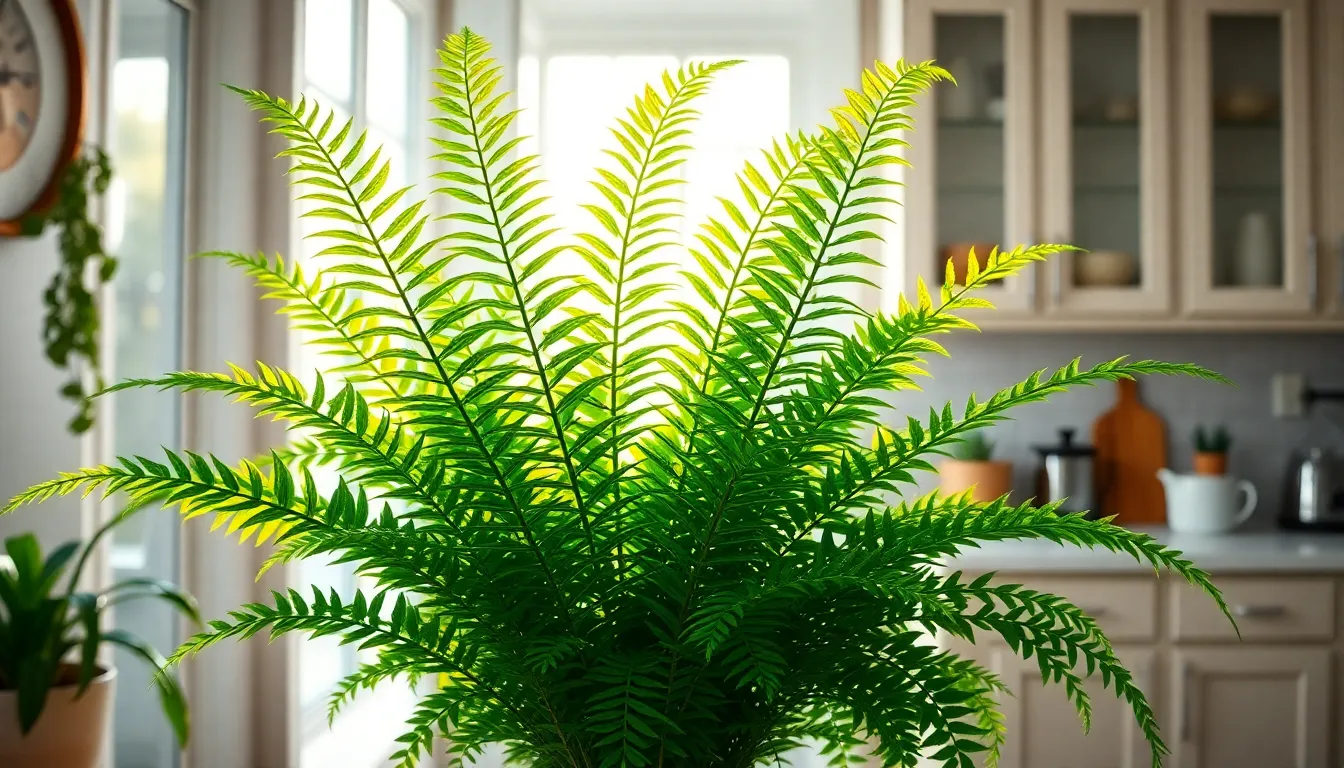
Boston ferns bring elegant greenery to our homes while maintaining complete safety for every family member. These stunning plants offer natural beauty without the concerns that come with toxic houseplants.
Humidity-Loving Characteristics
Moisture regulation makes Boston ferns natural humidifiers that actively improve our indoor air quality. These plants absorb moisture from the surrounding air and release it back as vapor, creating a balanced humidity environment throughout our living spaces.
Natural humidity control helps reduce common household problems like dry skin, respiratory issues, and static electricity. Boston ferns thrive in environments with high humidity levels, making them perfect for bathrooms, kitchens, or any space where moisture levels tend to be higher. Their ability to regulate moisture also supports their own vibrant foliage, creating a beneficial cycle that keeps both our homes and the plants healthy.
Non-Toxic Benefits for All Household Members
Safety comes first with Boston ferns, as these plants pose zero toxicity risks to children, cats, dogs, or other household pets. Unlike many houseplants that can cause poisoning or allergic reactions if ingested, Boston ferns eliminate these worries completely.
Families with curious toddlers can display these plants without constant supervision or concern about accidental ingestion. Pet owners particularly benefit from this non-toxic nature, as cats and dogs often explore plants through nibbling or chewing. Peace of mind accompanies the natural beauty these ferns bring to our living spaces, allowing us to enjoy lush greenery without safety compromises.
Indoor Growing Tips for Optimal Health
Bright, indirect sunlight provides the ideal lighting conditions for Boston ferns to flourish indoors. Direct sunlight can scorch their delicate fronds, so we position them near windows with filtered light or in rooms with plenty of ambient brightness.
Consistent moisture management keeps these plants thriving year-round. We maintain soil that stays moist but never waterlogged, checking regularly to prevent both drought stress and root rot. Regular misting or humidity trays help recreate their preferred high-moisture environment.
Temperature stability supports healthy growth, so we keep Boston ferns away from cold drafts and maintain indoor temperatures above 60°F (15°C). Good air circulation benefits these plants, though we avoid placing them directly in the path of strong winds or air conditioning vents.
Bamboo Palms: Tropical Elegance That’s Family-Friendly
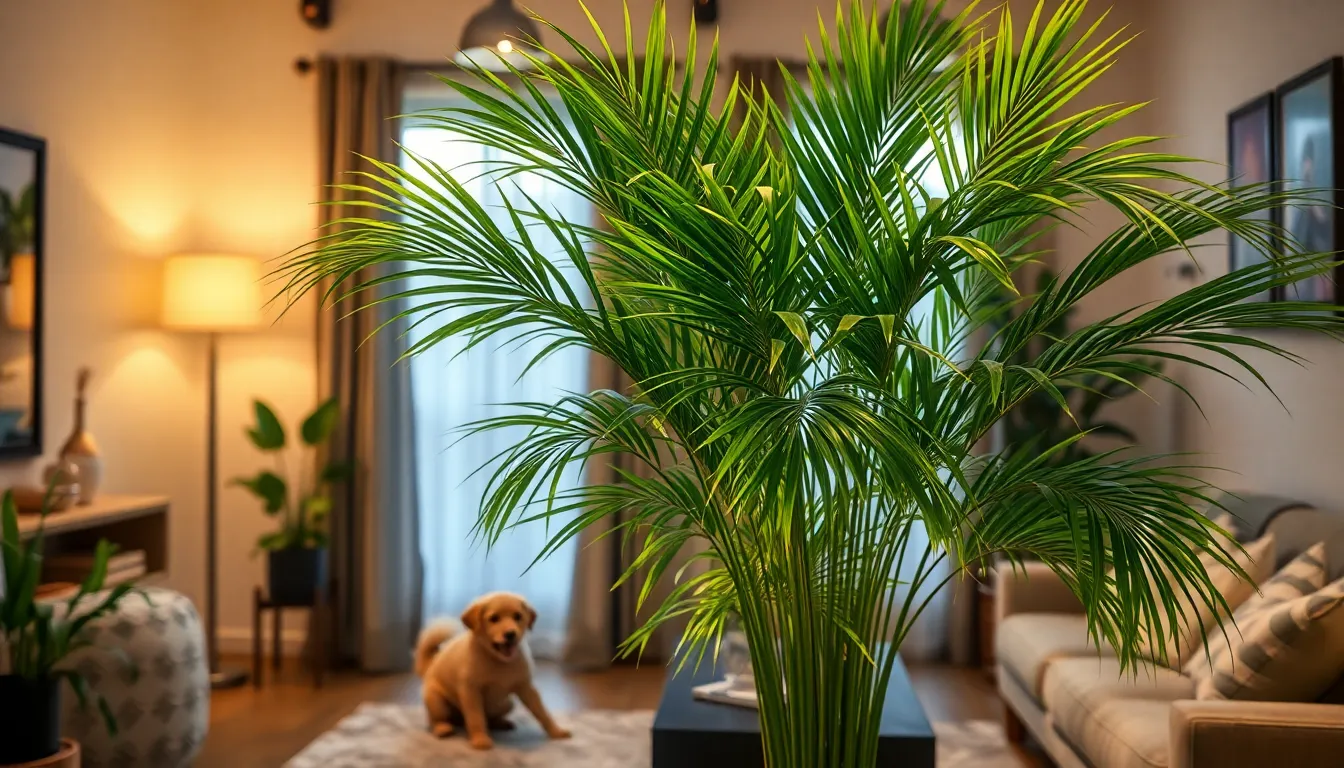
Bamboo Palms bring sophisticated tropical beauty to our homes while maintaining complete safety for our loved ones. These graceful plants offer multiple benefits that make them perfect additions to family-friendly indoor gardens.
Pet-Safe Certification and Peace of Mind
Bamboo Palms carry non-toxic certification for both pets and humans, ensuring our furry friends and children can explore safely around these beautiful plants. Veterinary professionals consistently recommend these palms for households with curious cats, dogs, and small animals who tend to investigate new greenery. Parents appreciate knowing their toddlers won’t face health risks from accidental contact or ingestion. This certified safety allows us to place these stunning palms in any room without constant worry about family members’ wellbeing.
Low-Light Tolerance for Any Room
These adaptable palms thrive in lower light conditions, making them versatile choices for spaces throughout our homes. Unlike many tropical plants that demand bright, direct sunlight, Bamboo Palms flourish in dim corners, hallways, and rooms with limited natural light. Interior designers often select these palms specifically because they maintain their lush appearance in challenging lighting situations. We can confidently position them in bedrooms, offices, or any space where other plants might struggle to survive.
Natural Humidity Boosting Qualities
Bamboo Palms function as living humidifiers, absorbing environmental moisture and releasing it as beneficial vapor that improves our indoor air quality. Research shows these palms naturally balance humidity levels in dry indoor environments, helping alleviate respiratory issues and skin dryness that plague many households. Their moisture-regulating abilities complement our existing climate control systems without requiring electricity or maintenance. We’ll notice improved comfort levels and better breathing quality when these palms work continuously to optimize our home’s atmospheric conditions.
Prayer Plants: Stunning Foliage with Zero Toxicity Concerns
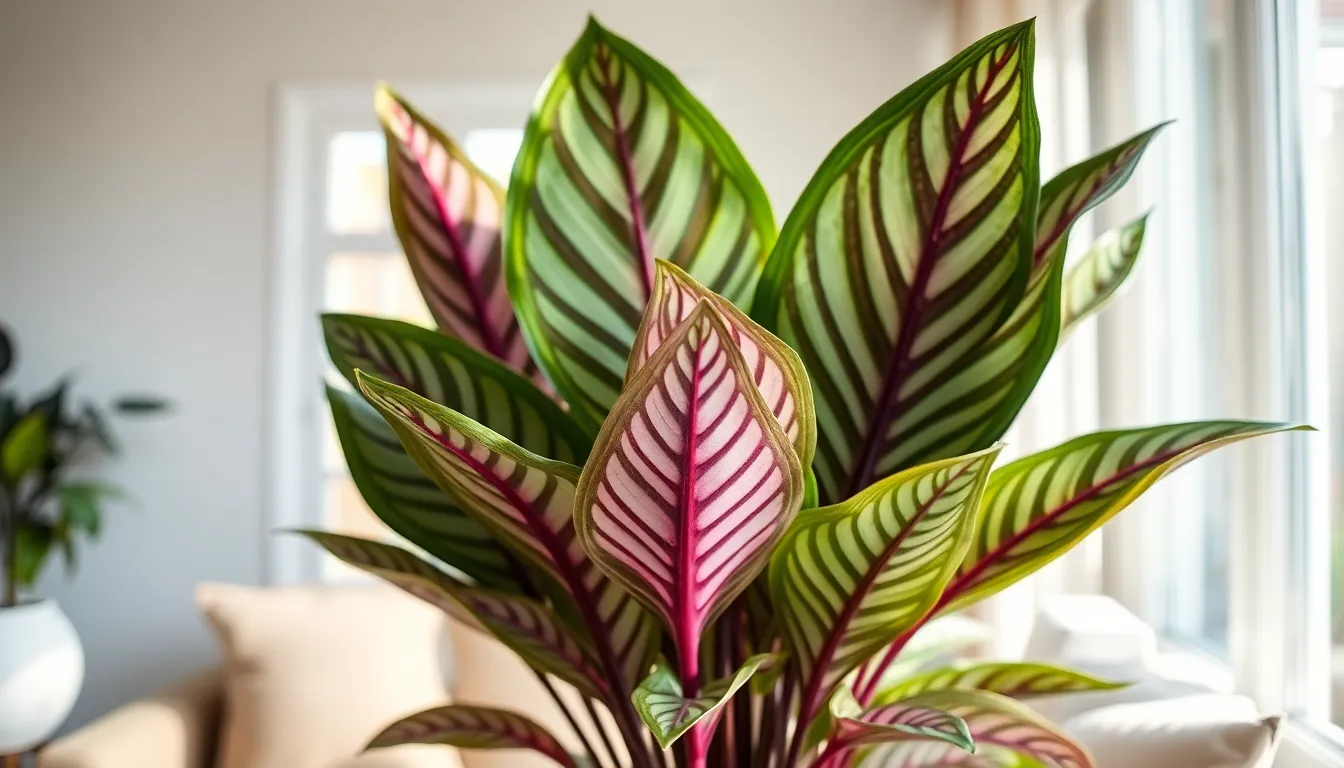
Prayer plants (Calathea spp.) offer an exceptional combination of visual beauty and complete safety for households with children and pets. These remarkable houseplants feature intricate leaf patterns while maintaining zero toxicity concerns.
Unique Leaf Movement Patterns
Prayer plants exhibit fascinating daily leaf movement that sets them apart from other houseplants. Their leaves fold upward at night as if in prayer, creating a ever-changing visual display that changes throughout the day. We love watching these plants respond to light changes by raising and lowering their beautifully patterned foliage.
The leaves showcase stunning colors in shades of green, purple, and pink with intricate markings that create natural artwork in our homes. This movement isn’t just beautiful—it’s a natural behavior that adds life and interest to any indoor space. Prayer plants bring both aesthetic appeal and captivating botanical activity to our living environments.
Safe Around Children and Animals
Prayer plants are completely non-toxic to both children and animals, making them perfect for family homes. We can place these plants anywhere without worrying about accidental ingestion by curious toddlers or pets. Their safety profile eliminates the stress of monitoring plant interactions in households with active children and animals.
Parents appreciate having beautiful greenery that poses zero health risks to their families. Pet owners find peace of mind knowing their cats and dogs can explore these plants safely. Prayer plants allow us to enjoy stunning foliage without compromising the wellbeing of our loved ones.
Ideal Indoor Growing Conditions
Prayer plants thrive in moderate to low indirect light, making them versatile for various room placements. They prefer consistently moist but well-drained soil and benefit significantly from higher humidity levels. We recommend placing them in bathrooms or kitchens where natural humidity is elevated.
These plants adapt well to typical indoor climates while flourishing best when humidity reaches optimal levels. They complement other humidity-loving plants and contribute to improved indoor air quality by adding beneficial moisture to our living spaces. Prayer plants require minimal specialized care while delivering maximum visual impact in our homes.
Ponytail Palms: Drought-Tolerant and Completely Harmless
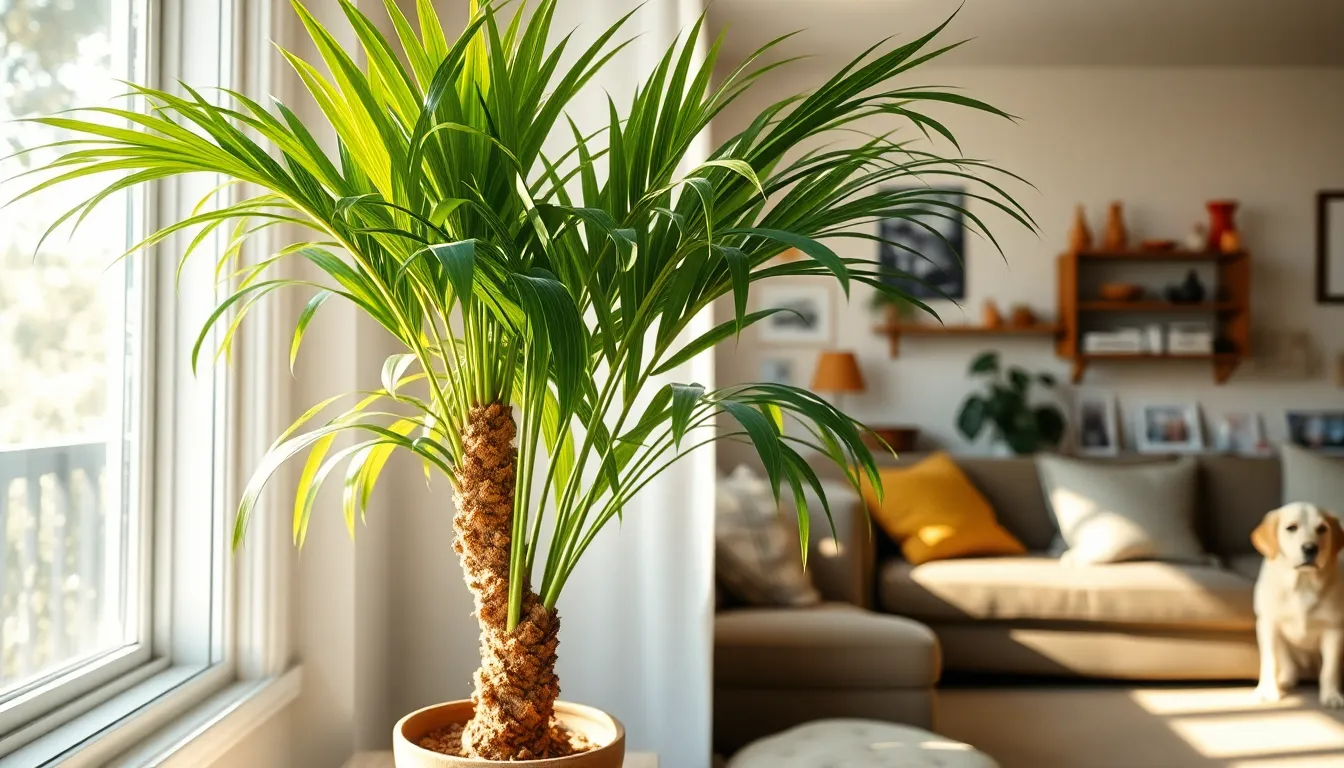
Ponytail Palms (Beaucarnea recurvata) offer the perfect solution for families seeking beautiful, low-maintenance plants that won’t compromise safety. These remarkable succulents combine exceptional drought tolerance with complete non-toxicity, making them ideal additions to any household with pets or children.
Water-Wise Care for Busy Households
Ponytail Palms excel in homes where frequent plant care isn’t always possible due to their exceptional drought tolerance. Their thick, bulbous trunk stores water efficiently, allowing these plants to survive extended periods without watering. We recommend watering them infrequently, as they thrive with minimal attention compared to other houseplants.
Bright, indirect sunlight provides the optimal growing conditions for these resilient plants. They adapt well to various lighting situations, making them versatile choices for different rooms throughout your home. Busy families can confidently choose Ponytail Palms knowing they’ll flourish even with occasional neglect.
Non-Toxic Properties for Multi-Pet Homes
Safety becomes our top priority when selecting plants for homes with multiple pets or curious children. Ponytail Palms are completely non-toxic to cats, dogs, and humans, eliminating the worry that comes with many popular houseplants. Pet owners can place these plants anywhere in their homes without concern for accidental ingestion.
Unlike many decorative plants that pose risks if consumed, Ponytail Palms present zero toxic threat to family members. Multi-pet households particularly benefit from this safety feature, as owners don’t need to monitor interactions between their animals and these plants. Children can safely explore and touch these plants without parents worrying about potential poisoning incidents.
Distinctive Appearance and Growth Habits
Ponytail Palms create striking focal points with their unique sculptural appearance featuring swollen, water-storing trunk bases. Long, arching, narrow leaves cascade from the top, resembling an actual ponytail and adding graceful movement to indoor spaces. Their distinctive silhouette makes them standout decorative elements that complement various interior design styles.
Growth patterns remain slow but steady, with these plants potentially reaching several feet indoors over time. We appreciate how their compact nature makes them suitable for smaller spaces while their eventual size creates impressive statements in larger rooms. Their resilient nature combined with aesthetic appeal makes Ponytail Palms excellent choices for anyone wanting both beauty and functionality in their plant collection.
African Violets: Colorful Blooms Without Safety Risks
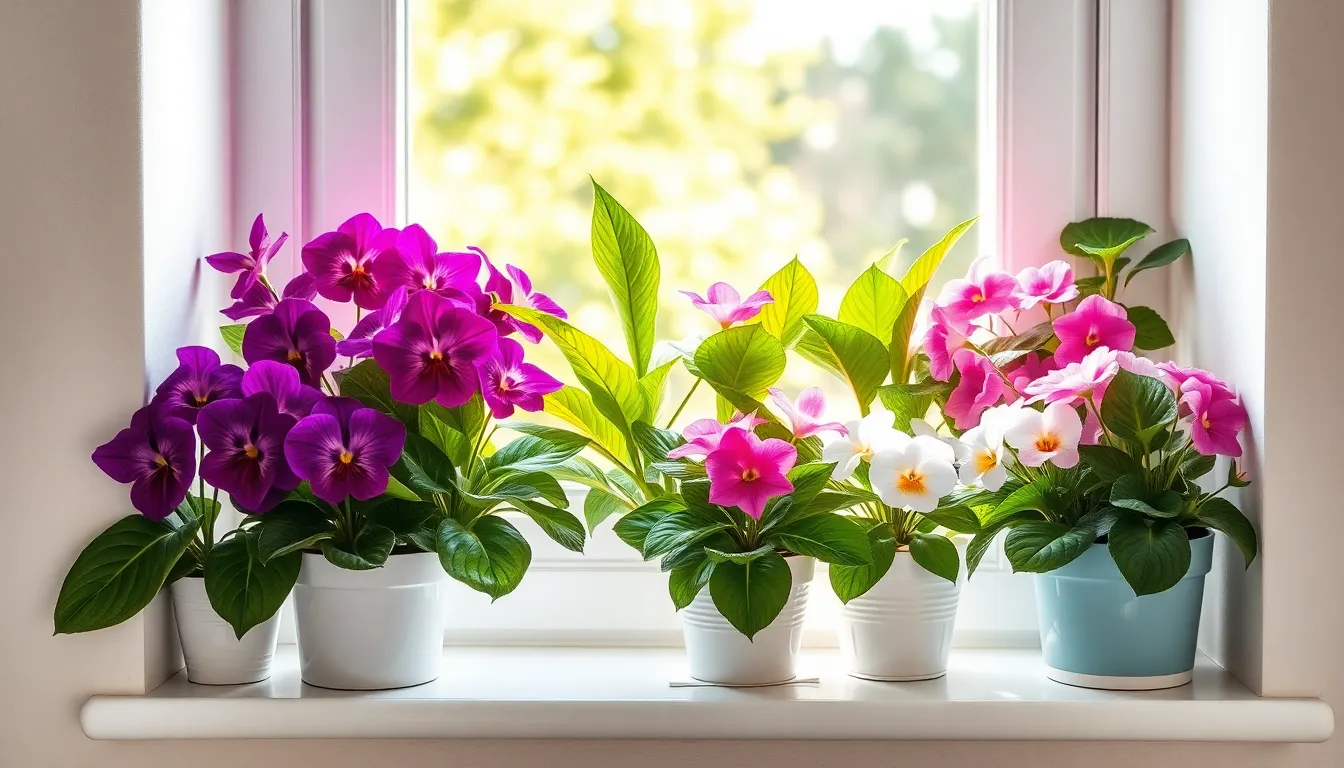
African Violets bring vibrant flowers into our homes while maintaining complete safety for our families and pets. These charming houseplants offer the perfect combination of beauty and peace of mind.
Pet and Child-Safe Flowering Options
Listed among the safest houseplants available, African Violets pose zero toxicity risks to cats, dogs, and children. We can confidently place these flowering beauties anywhere in our homes without worrying about accidental ingestion by curious pets or toddlers.
Flowering plants typically raise safety concerns for pet owners, but African Violets break this pattern entirely. Their velvety blooms come in stunning colors like purple, pink, white, and blue, creating decorative charm without the poisoning risks associated with many other flowering houseplants.
Households with multiple pets benefit significantly from choosing African Violets over toxic alternatives like lilies or azaleas. We’re able to enjoy continuous blooms throughout the year while our furry friends explore safely around these pet-friendly plants.
Compact Size Perfect for Small Spaces
Small apartments and tight spaces accommodate African Violets effortlessly due to their naturally compact growth habit. These plants rarely exceed 6 inches in height and width, making them ideal for desks, shelves, windowsills, and cramped living quarters.
Office workers appreciate African Violets because they fit perfectly on work surfaces without overwhelming limited desk space. Their modest footprint allows us to create colorful displays even in the smallest cubicles or home offices.
Apartment dwellers maximize their plant collections by choosing African Violets that provide maximum visual impact in minimal space. We can arrange multiple varieties together to create stunning color combinations without sacrificing precious square footage.
Simple Propagation Methods
Leaf cuttings provide the easiest propagation method for multiplying our African Violet collections without purchasing new plants. We simply remove a healthy leaf with its stem and place it in moist potting mix to develop new plantlets.
Beginner gardeners succeed with African Violet propagation because the process requires minimal technical knowledge or special equipment. This simplicity encourages plant sharing among friends and family members who want to expand their own collections.
Hobbyists of any skill level multiply their plants using basic propagation techniques that typically show results within 4-6 weeks. We’re able to create multiple new plants from a single parent, supporting our indoor gardening goals while staying within budget constraints.
Peperomia Varieties: Diverse Options for Safe Indoor Gardens
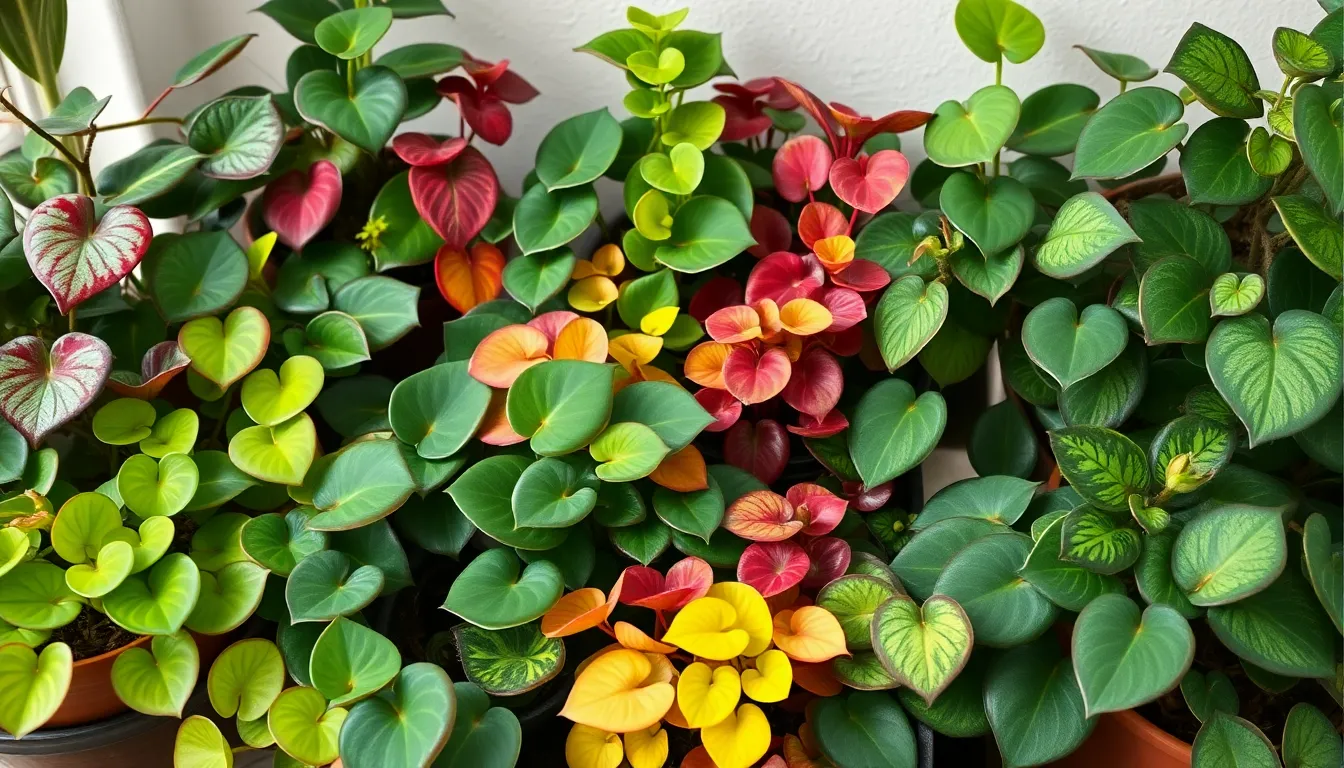
Peperomia plants offer an incredible range of safe houseplant options that complement the stunning varieties we’ve already explored. These compact beauties provide pet owners and families with even more choices for creating worry-free indoor gardens.
Multiple Species to Choose From
Peperomia encompasses over 1,000 different species, giving us an impressive selection of foliage shapes, colors, and sizes for our indoor spaces. Popular varieties include the heart-shaped Peperomia Green Bean, the textured Peperomia Caperata with its rippled leaves, and the trailing Peperomia Prostrata perfect for hanging baskets. Round-leafed options like Peperomia Polybotrya create dramatic focal points, while striped varieties such as Peperomia Clusiifolia add visual interest with their cream and green patterns.
Each species brings unique characteristics to our plant collections, from glossy succulent-like leaves to velvety textures that invite gentle touching. Compact growth habits make these plants ideal for small apartments, office desks, or as accent pieces throughout larger homes. Their diverse appearances allow us to mix and match different Peperomia varieties to create stunning displays without worrying about our pets’ safety.
Low-Maintenance Care Requirements
Peperomias thrive with minimal attention, making them perfect additions to our low-maintenance plant collections alongside Ponytail Palms and other easy-care options. These resilient plants prefer bright, indirect light and can tolerate lower light conditions, adapting well to various room placements throughout our homes. Watering becomes simple with Peperomias since they actually prefer their soil to dry out between waterings.
Overwatering poses the biggest threat to these plants, so we can water them less frequently than most other houseplants. Their thick, fleshy leaves store moisture effectively, allowing them to handle occasional neglect during busy periods or travel. Temperature requirements remain flexible, as Peperomias comfortable in typical household temperatures between 65-75°F.
Confirmed Non-Toxic Status for All Pets
Peperomia varieties join our growing list of completely safe houseplants, posing zero toxicity risks to cats, dogs, and other household pets. This confirmed non-toxic status allows us to place these plants anywhere in our homes without the constant worry about curious pets nibbling on leaves. Unlike many popular houseplants such as lilies, sago palms, and azaleas that contain harmful toxins, Peperomias provide peace of mind for pet-owning families.
Veterinary organizations and plant safety databases consistently classify all Peperomia species as non-toxic, giving us confidence in our plant choices. Even if our pets decide to sample the leaves, we won’t face emergency veterinary visits or poisoning concerns. This safety factor makes Peperomias excellent starter plants for new pet owners who want to begin their houseplant journey without compromising their animals’ wellbeing.
Haworthia Succulents: Modern Appeal with Complete Safety
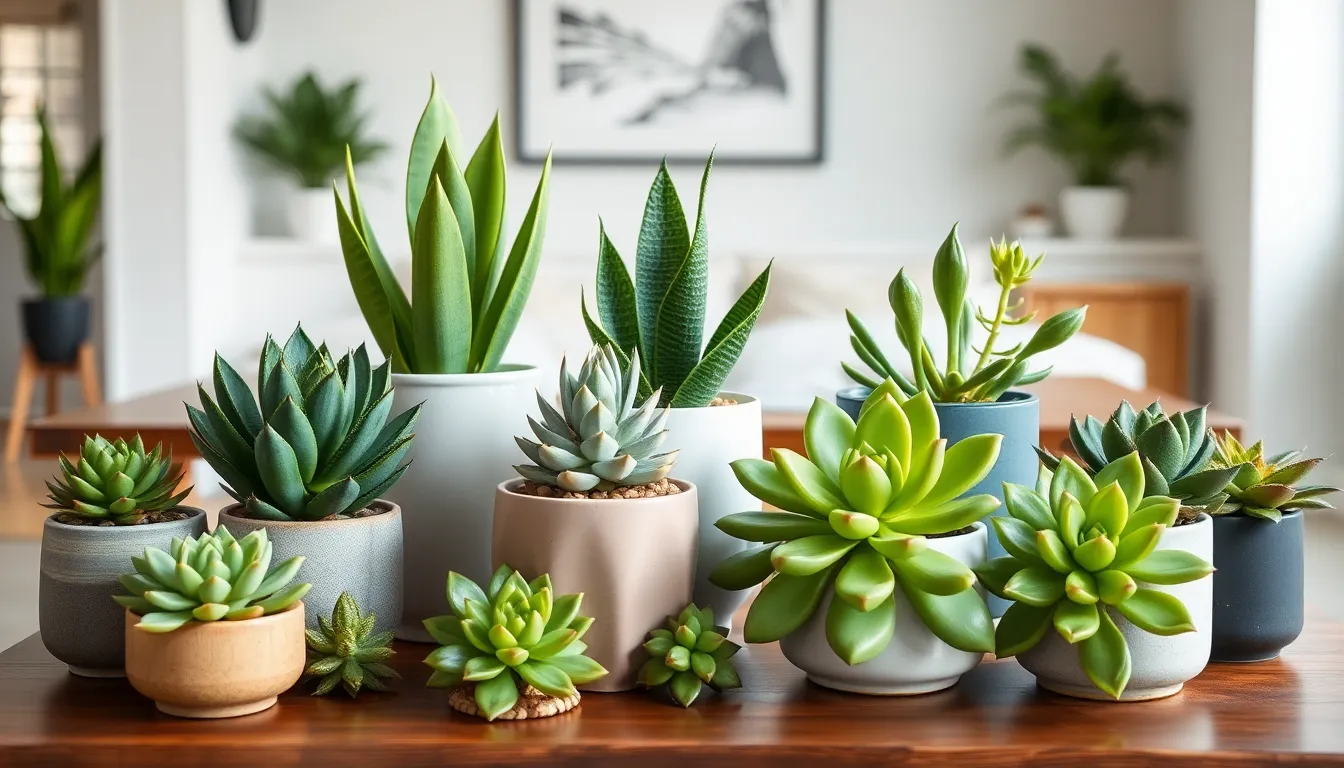
Building on our collection of safe houseplants, we’re excited to introduce Haworthia succulents as the perfect blend of contemporary style and family safety. These geometric beauties offer everything modern homeowners want: sleek design, minimal maintenance, and complete peace of mind around children and pets.
Minimalist Aesthetic for Contemporary Homes
Haworthia succulents deliver that coveted minimalist look with their clean geometric shapes and compact size. We love how their translucent leaf tips create visual interest while maintaining the simple lines that contemporary design demands. Displayed in sleek ceramic pots or modern terrariums, these plants add sophistication without overwhelming your carefully curated space.
Grouping different Haworthia varieties like Haworthia cooperi or Haworthia truncata creates stunning visual arrangements that serve as living sculptures. Their architectural forms complement modern furniture and neutral color palettes perfectly. Whether you’re decorating a downtown loft or suburban contemporary home, these succulents integrate seamlessly into any minimalist design scheme.
Water-Efficient Growing Habits
We particularly appreciate how Haworthias thrive with minimal water requirements, making them ideal for busy lifestyles and sustainable living practices. These drought-tolerant plants typically need watering only every 2-3 weeks during growing season, and even less frequently in winter months. Their water-storing capabilities mean you can travel or maintain hectic schedules without worrying about plant care.
Unlike many houseplants that demand consistent moisture, Haworthias actually prefer their soil to dry completely between waterings. This forgiving nature makes them perfect starter plants for new gardeners or anyone wanting low-maintenance greenery. Their efficient water use also aligns with eco-conscious living practices, reducing your household’s water consumption while still enjoying beautiful indoor plants.
Safe Alternative to Toxic Succulent Varieties
What sets Haworthias apart from other popular succulents is their complete non-toxic profile for both pets and children. Unlike Jade plants or certain Euphorbia species that can cause poisoning if ingested, Haworthias pose zero health risks to curious toddlers or pets who might nibble on plants. This safety advantage allows families to place these succulents anywhere in the home without constant supervision or worry.
Many succulent enthusiasts avoid certain varieties due to toxicity concerns, but Haworthias eliminate this compromise entirely. Families can enjoy the modern appeal of succulent gardening while maintaining a completely safe environment. Pet owners especially benefit from this peace of mind, knowing their cats or dogs won’t face health risks from occasional plant exploration that’s natural behavior for many animals.
Parlor Palms: Classic Houseplants with Proven Safety Records
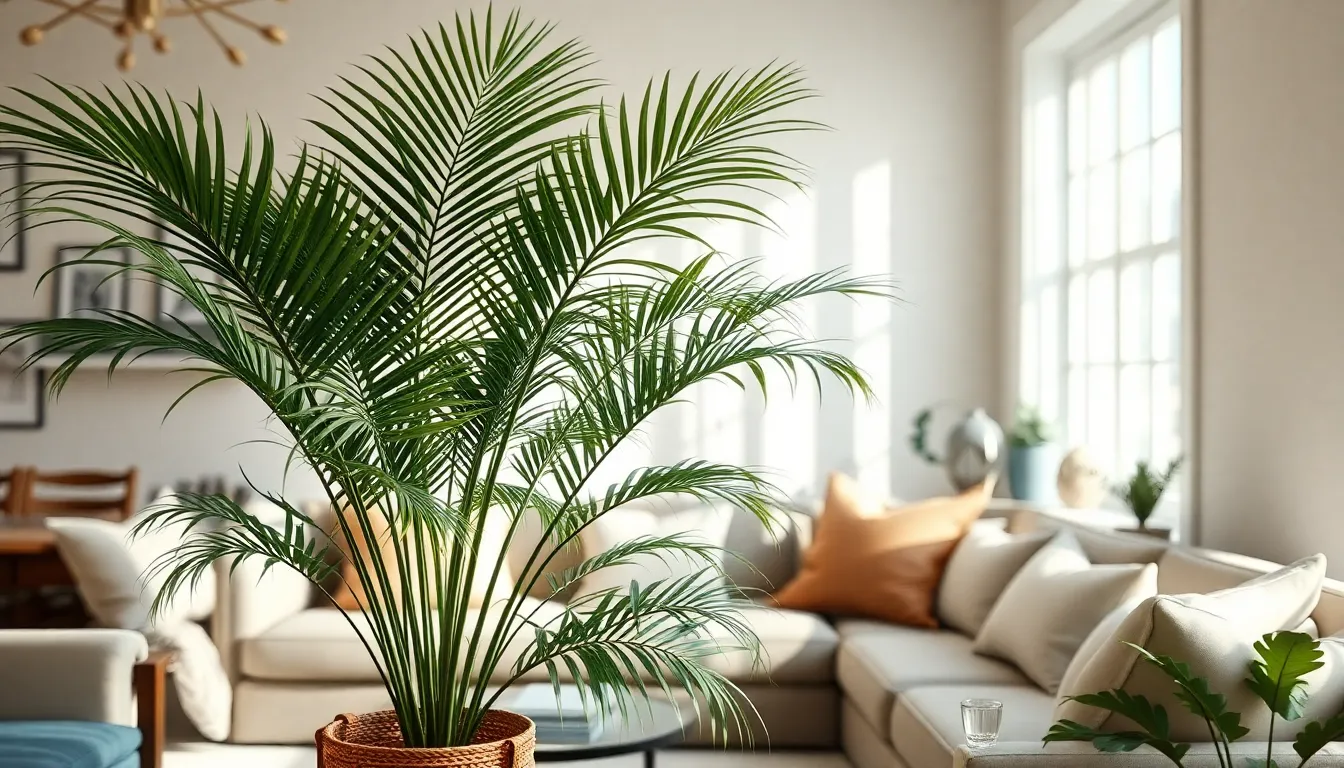
Parlor palms continue to be favored by families seeking traditional indoor greenery that’s completely safe for pets and children. These timeless plants have earned their reputation as one of the most reliable non-toxic houseplant choices available today.
Traditional Indoor Palm Benefits
Parlor palms offer exceptional air purification capabilities while maintaining their reputation as completely safe houseplants. These classic palms effectively remove common indoor air pollutants, contributing to healthier home environments without posing any toxicity risks to family members. Their tropical aesthetic transforms any space into a peaceful retreat, creating the perfect balance between beauty and safety that modern families demand.
We appreciate how parlor palms naturally increase humidity levels in our homes, which can help alleviate dry skin and respiratory issues during colder months. Their elegant fronds add sophisticated texture to interior spaces while requiring minimal maintenance compared to other tropical plants. Many homeowners find that parlor palms serve as excellent statement pieces in living rooms, bedrooms, and home offices.
Low-Light Adaptability
Parlor palms thrive in low-light conditions, making them incredibly versatile for various indoor spaces throughout our homes. These adaptable plants perform well in rooms with limited natural light, including basements, interior offices, and north-facing windows where other plants might struggle. Their ability to flourish in indirect light means we can place them virtually anywhere without worrying about exact lighting requirements.
Unlike many houseplants that demand bright, direct sunlight, parlor palms actually prefer filtered or indirect light conditions. This characteristic makes them ideal for apartments, offices, and homes with limited window space. We’ve found that their tolerance for lower light conditions allows families to enjoy lush greenery in previously challenging spaces.
Long History of Safe Indoor Use
Parlor palms have been cultivated as indoor plants for over a century, establishing an extensive track record of safety in family homes. This long history of indoor use has allowed plant enthusiasts and safety experts to thoroughly document their non-toxic properties across multiple generations of pet owners and parents. Victorian-era homes first popularized these palms as safe indoor companions, and modern families continue to trust their proven safety record.
Decades of documentation confirm that parlor palms pose no health risks to children, cats, dogs, or other household pets. Their established reputation in the houseplant community provides peace of mind for families who want to introduce greenery without compromising safety. We value how this extensive history eliminates guesswork when selecting plants for homes with curious children and active pets.
Conclusion
Creating a safe and beautiful indoor garden doesn’t require sacrificing style or plant variety. We’ve shown you that many stunning houseplants can thrive in your home while keeping your loved ones protected.
From the air-purifying spider plant to the elegant parlor palm each of these non-toxic options brings unique benefits to your living space. Whether you’re drawn to the vibrant blooms of African violets or the geometric appeal of haworthia succulents there’s a perfect match for every home and skill level.
We encourage you to start small and gradually build your collection of safe houseplants. Your family and pets will thank you for choosing beauty without compromise and you’ll enjoy the peace of mind that comes with responsible plant parenthood.
Frequently Asked Questions
What makes a houseplant safe for pets and children?
Non-toxic houseplants are those that won’t cause harm if accidentally ingested by pets or children. These plants have been scientifically tested and confirmed to be free from toxic compounds that could cause poisoning, digestive issues, or other health problems. Safe plants allow families to enjoy indoor gardening without the constant worry of monitoring interactions between curious pets, toddlers, and their greenery.
Which non-toxic plants are best for beginners?
Spider plants, Ponytail Palms, and Haworthia succulents are excellent choices for beginners. These plants require minimal care, tolerate various lighting conditions, and are very forgiving if you forget to water them occasionally. Spider plants thrive in bright, indirect light, while Ponytail Palms and Haworthias are drought-tolerant and perfect for busy lifestyles or those new to plant care.
Can non-toxic houseplants really improve indoor air quality?
Yes, many non-toxic plants are excellent air purifiers. Spider plants filter harmful chemicals like formaldehyde and xylene, while Boston ferns act as natural humidifiers, regulating moisture levels to alleviate dry skin and respiratory issues. Bamboo Palms and Parlor Palms also contribute to cleaner air while maintaining complete safety for your family and pets.
What are the best pet-safe plants for low-light areas?
Bamboo Palms, Parlor Palms, and Prayer Plants excel in low-light conditions. These plants can thrive in areas with minimal natural light, making them perfect for interior rooms, offices, or spaces away from windows. Peperomia varieties also tolerate lower light conditions while offering diverse foliage options, and all are completely safe for pets and children.
How do I care for Boston ferns in my home?
Boston ferns love high humidity and consistent moisture. They thrive in bathrooms and kitchens where humidity levels are naturally higher. Keep the soil consistently moist but not waterlogged, and provide bright, indirect light. These ferns act as natural humidifiers, making them beneficial for both your health and indoor air quality while remaining completely safe for all family members.
Are there any flowering non-toxic houseplants?
African Violets are perfect flowering houseplants that are completely safe for pets and children. These compact plants produce vibrant, colorful blooms and are ideal for small spaces like desks and windowsills. They’re easy to propagate through leaf cuttings, making them accessible for beginner gardeners who want to enjoy flowers without safety concerns.
What makes Prayer Plants unique among non-toxic houseplants?
Prayer Plants (Calathea) offer stunning visual appeal with their intricate leaf patterns in shades of green, purple, and pink. Their unique characteristic is leaf movement – they fold upward at night, creating a dynamic display throughout the day. They thrive in moderate to low indirect light and prefer consistently moist soil, making them ideal for high-humidity areas.
How often should I water drought-tolerant non-toxic plants?
Drought-tolerant plants like Ponytail Palms and Haworthia succulents require infrequent watering. Water them only when the soil is completely dry, typically every 2-3 weeks depending on your home’s humidity and temperature. These plants store water in their leaves or stems, making them perfect for busy families or those who travel frequently while maintaining complete safety.

